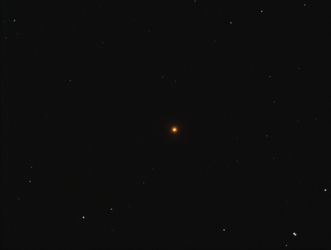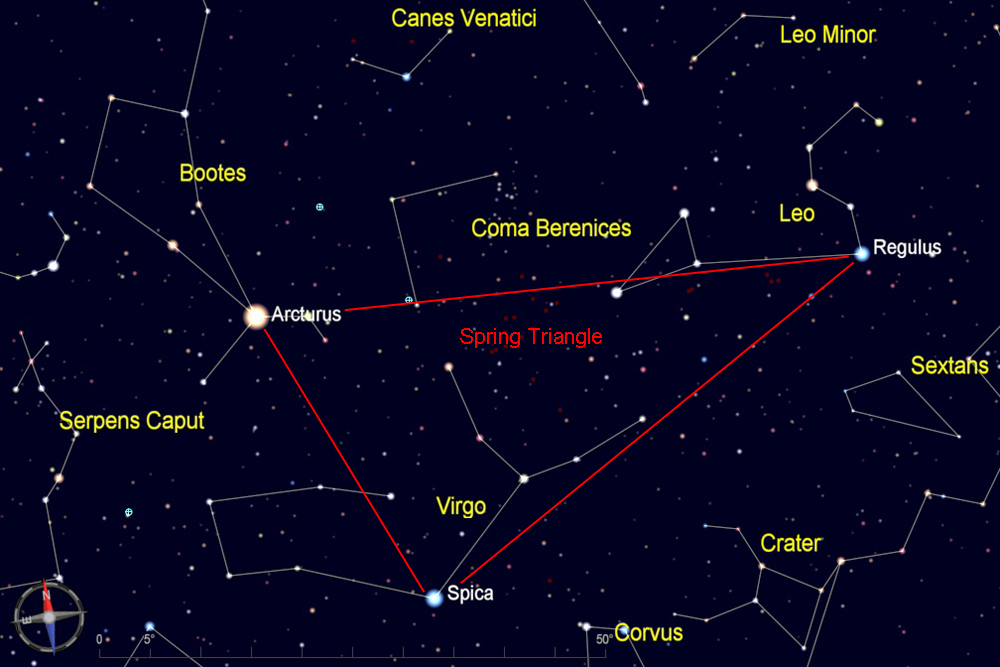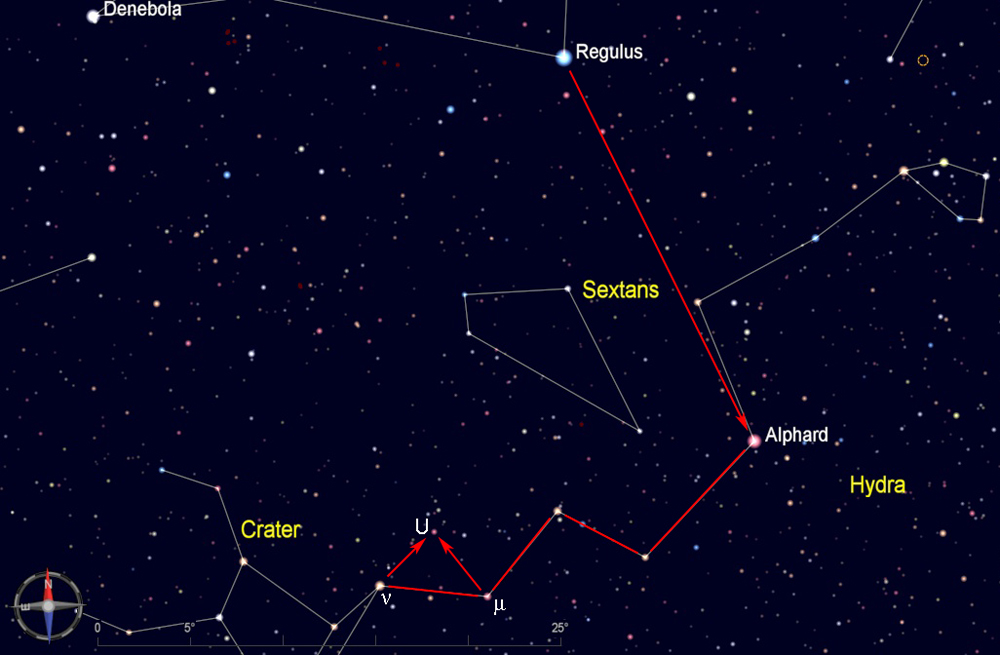U Hydrae is one of the reddest stars in the sky. It is classified as a carbon star because there is a large amount of carbon in the star's atmosphere, which absorbs light at the blue end of the spectrum but allows the red wavelengths to pass through.
It is a large and bright star, about 400 times as luminous as our Sun and about 680 light years away. Its red color is easily seen in binoculars, and it is a memorable sight in any telescope.
|
 |
| Evening visibility: |
April-June |
| Best viewed with: |
binoculars, telescope |
| |
Printable chart (pdf) |
View larger image |
Directions:
Start by finding the Spring Triangle, which consists of three widely-separated first magnitude stars--Arcturus, Spica, and Regulus. The Spring Triangle is high in the southeast sky in early spring, and in the southwest sky by mid-Summer. (To get oriented, you can use the handle of the Big Dipper and "follow the arc to Arcturus").
For this star hop, begin at Regulus in the constellation Leo. |
 |
| Look about 30 degrees to the southwest of Regulus to find 2nd magnitude Alphard, the brightest star in Hydra, the water snake. From Alphard, look east and follow a zig-zag line of stars that form part of the slithering body of Hydra. Using the chart below, find the 3rd and 4th magnitude stars ν (nu) and μ (mu) Hydrae. Use these two stars to visualize a triangle, and U Hydrae will be at the top corner. It can be easily seen in binoculars or a finderscope. |
 |
| Star charts created with Cartes du Ciel |
| |
| |


